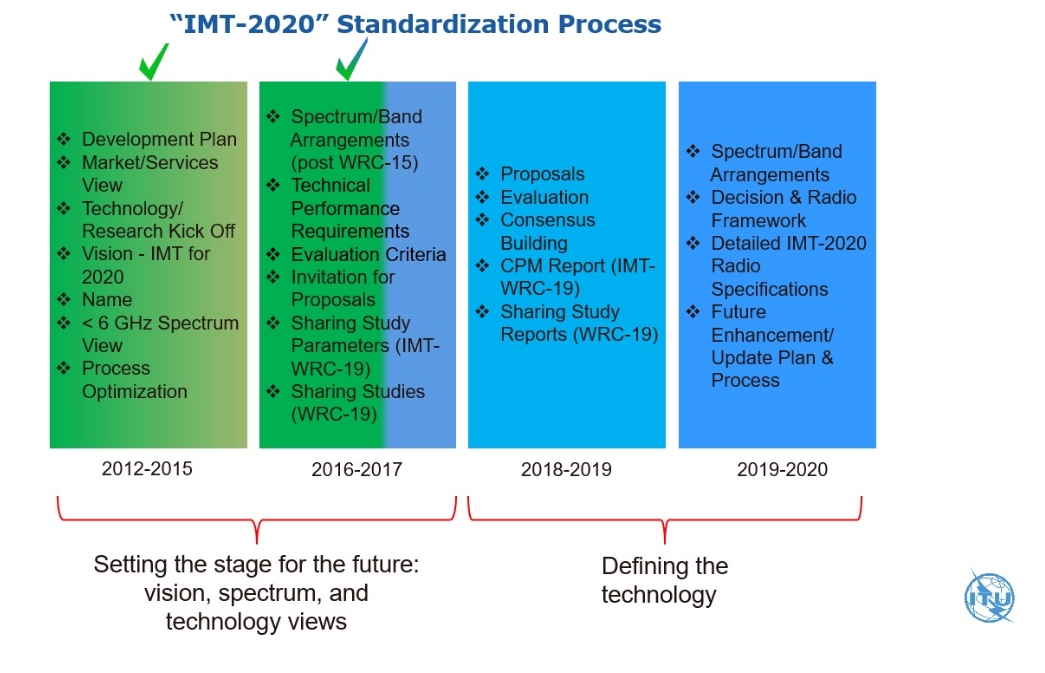The GSMA run annual World Mobile Congress just completed in Barcelona saw 22 of the largest operators and suppliers calling for a one year acceleration of the standardisation process of NR (New Radio) 5G Radio Access Network RAN. Included in the Group of 22 are Telstra and its mobile network technology supplier Ericsson.
 The current 5G timetable would see networks based on the new RAN NR Release 15 standard deployed from 2020 however many operators and network equipment suppliers are demonstrating 5G like LTE Advance (4.5G) and pre-standard 5G equipment and performance already. These trials and demonstrations and their attendant press releases and market positioning publicity will only accelerate as 2020 approaches.
The current 5G timetable would see networks based on the new RAN NR Release 15 standard deployed from 2020 however many operators and network equipment suppliers are demonstrating 5G like LTE Advance (4.5G) and pre-standard 5G equipment and performance already. These trials and demonstrations and their attendant press releases and market positioning publicity will only accelerate as 2020 approaches.
The ITU for its part HERE has set the draft requirements the new technology. The requirements are expected to be finally approved by ITU-R Study Group 5 at its next meeting in November 2017. The requirements for 5G can be summarised as follows:
- Peak data rate: 20 Gbps down / 10 Gbps up
- Peak spectral efficiency: 30 bits/Hz down (8×8 MIMO) / 15 bits/Hz up (4×4 MIMO)
- Area traffic capacity in downlink 10 Mbit/s/m2 for an indoor hotspot for eMBB evolved Mobile Broaband
- User experienced data rate 100 Mbps down / 50 Mbps (5% of the peak data rate)
- Latency: 4 ms for eMBB and 1 ms for URLLC Ultra-Reliable and Low-Latency Communications
- Mobility: Up to 500 km/h with varying requirements for uplink spectral efficiency at different speeds
- Minimum bandwidth: 100 MHz
- Maximum aggregated bandwidth: 1 GHz in bands above the 6 GHz
You can understand that operators would be keen to deploy the more efficient, higher capacity and diverse capability 5G NR equipment as soon as possible to avoid having to spend money on, capable but not as good, 4G LTE equipment much of which will have a reduced service life due to 5G. As well the mobile network equipment providers would like to have the current slow down in their orders for 4G due to impending 5G adoption be as short as possible.
The operator and supplier group is proposing that the Non-Standalone NR be fast tracked by a year allowing them to augment existing LTE RAN and evolved packet core with standards compliant 5G NR in 2019. There is however much work to be done to define the standard summarised in the ITU chart below so it will be interesting to see if the group’s entreaties to speed up the process have any effect.
